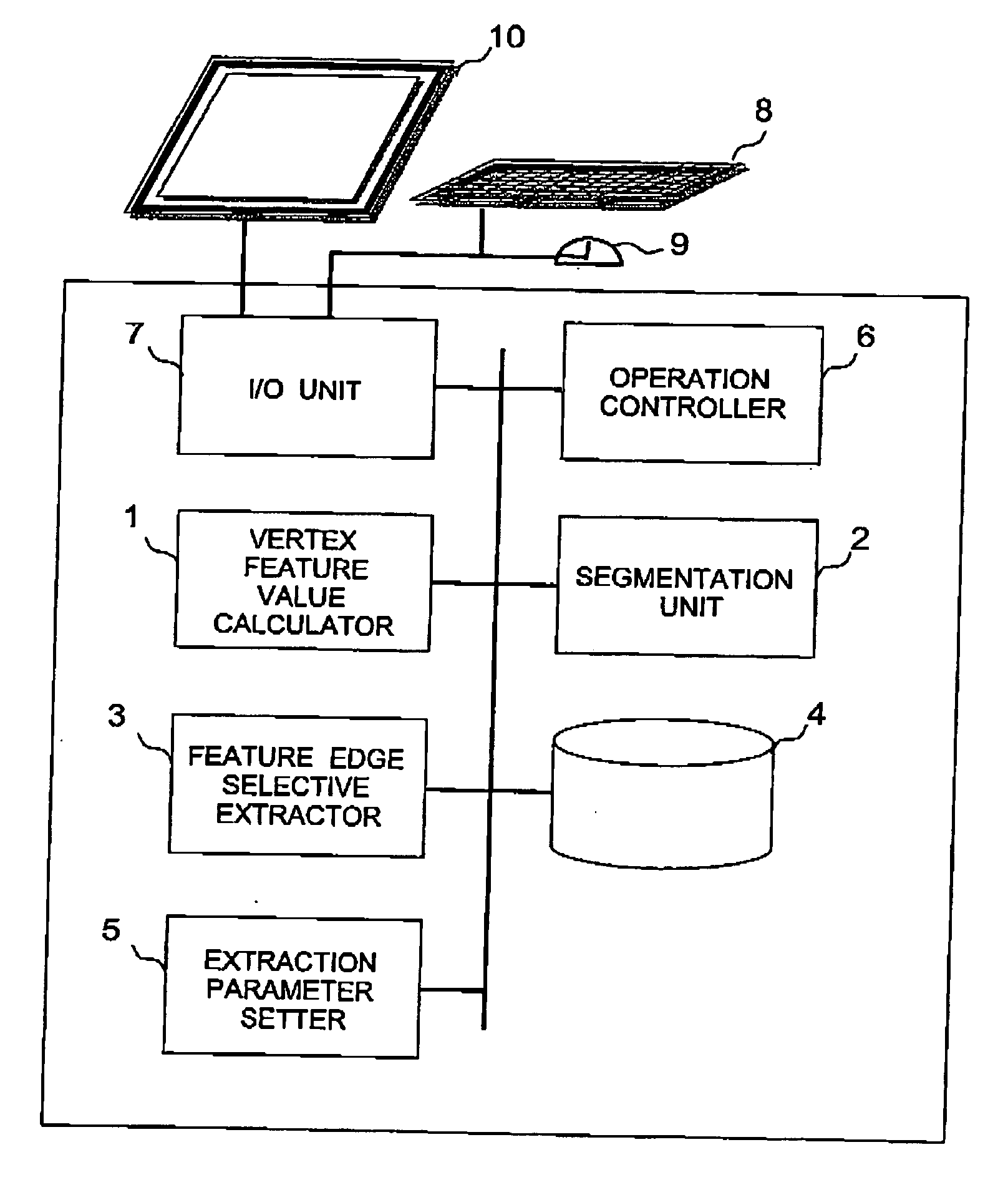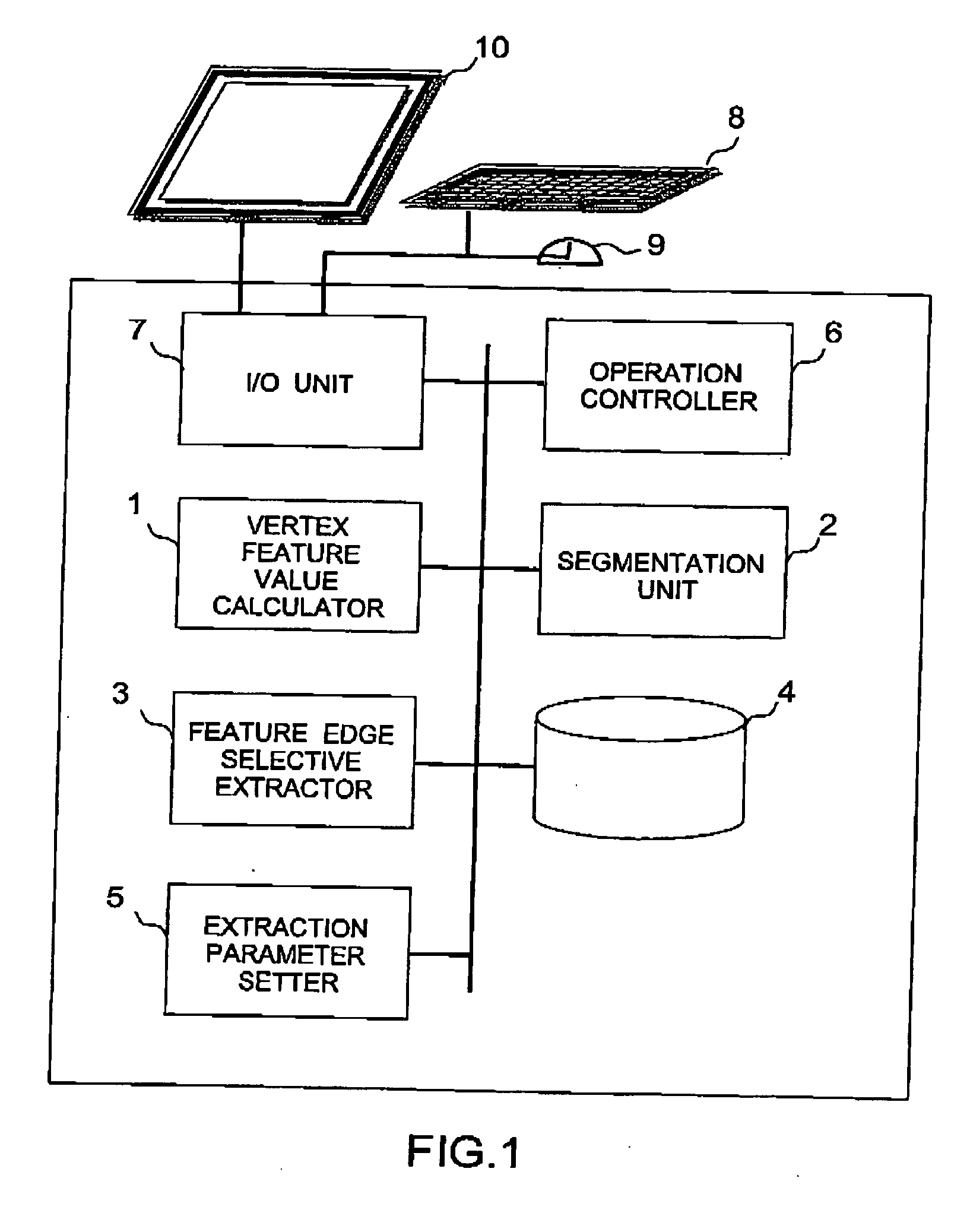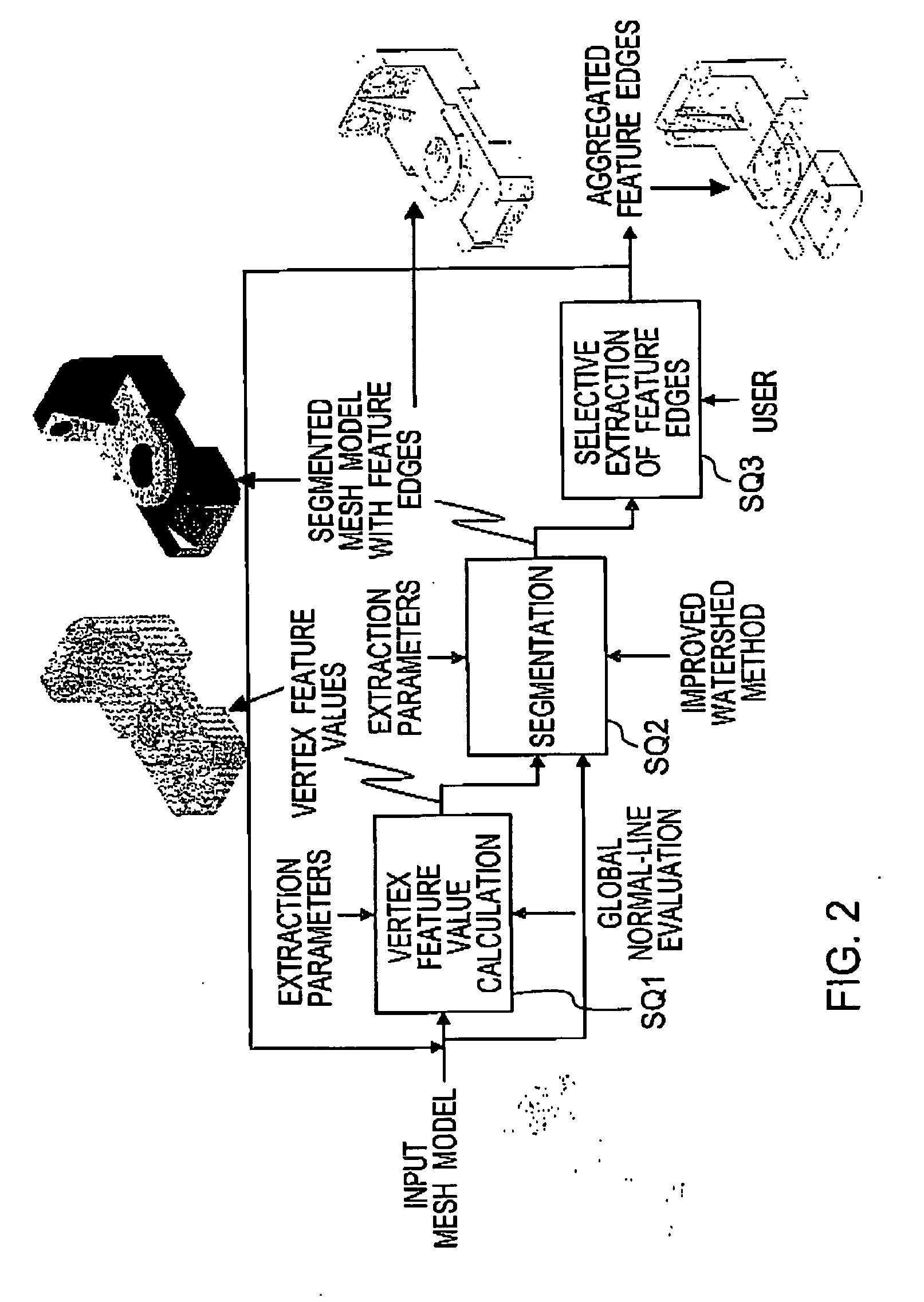Apparatus and a method of feature edge extraction from a triangular mesh model
- Summary
- Abstract
- Description
- Claims
- Application Information
AI Technical Summary
Benefits of technology
Problems solved by technology
Method used
Image
Examples
examples
[0093] Tests were carried out and test results confirmed that the present invention is capable of extracting feature edges from a mesh model without the influence of noise contained in the mesh model or a method used to form the mesh model, extracting the boundaries of a fillet surface as feature edges, recognizing, as a segment, an area surrounded with feature edges that form a loop, and selectively extracting feature edges depending on an object of use. The extracted feature edges are readable into a 3D CAD system.
[0094]FIGS. 14A to 14F show results of tests carried out to verify the effect of the present invention. FIG. 14A shows a mock-up of an IT hardware casing made of hard urethane foam. The mock-up was measured with a noncontact measuring device (Comet 400 (trade name)) to define surface points (about 1.4 million points). Based on the surface points, a high-density mesh model composed of triangular meshes was prepared. From the mesh model, feature edges were extracted as sh...
PUM
 Login to View More
Login to View More Abstract
Description
Claims
Application Information
 Login to View More
Login to View More - R&D
- Intellectual Property
- Life Sciences
- Materials
- Tech Scout
- Unparalleled Data Quality
- Higher Quality Content
- 60% Fewer Hallucinations
Browse by: Latest US Patents, China's latest patents, Technical Efficacy Thesaurus, Application Domain, Technology Topic, Popular Technical Reports.
© 2025 PatSnap. All rights reserved.Legal|Privacy policy|Modern Slavery Act Transparency Statement|Sitemap|About US| Contact US: help@patsnap.com



